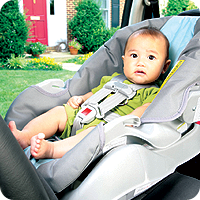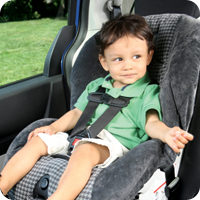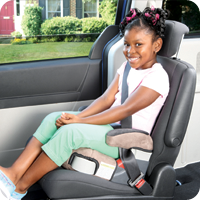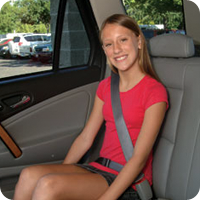Buying a Car Seat

Step 1 - Rear-facing seats
Always secure infants under 2 years age in the back seat in rear-facing child safety seats. Pay close attention to the height and weight limit of the particular seat.

Step 2 - Forward-facing seats
From ages 2 to 4 years children outgrow their rear-facing seats and are ready for forward-facing child seats placed securely in the back seat.

Step 3 - Booster seats
From ages 4 to 8 years children outgrow their forward-facing seats but seat belts don’t fit them properly. At this stage, children should ride in booster seats in the back seat.

Step 4 - Seat belts
From age 9 and up or when children are 4’9” tall, they can safely use the adult seat belt in the back seat. The shoulder belt should cross the child’s chest and rest snugly on the shoulder. The lap belt should rest low across the pelvis or hip area-never across the stomach area.
Car Seat Recommendations for Children (nhtsa.gov)
Buying a Child Seat
The type of seat your child needs depends on several things including their size and the type of vehicle you drive.
Car Seat Recalls
CHOP Car Seat Education
NHTSA Car Seat Ease of Use Rating
NHTSA Car Seat and Booster Seat Overview
Safe Kids USA for parents
Ultimate Car Seat Guide
The American Academy of Pediatrics recommends keeping children in rear-facing child safety seats until they are 2 years old. Learn more.
Children with Special Needs
If your child has special needs, a variety of child safety seat options are available. Although you won't find these special car seats in popular department stores, they are readily available if you need them.
